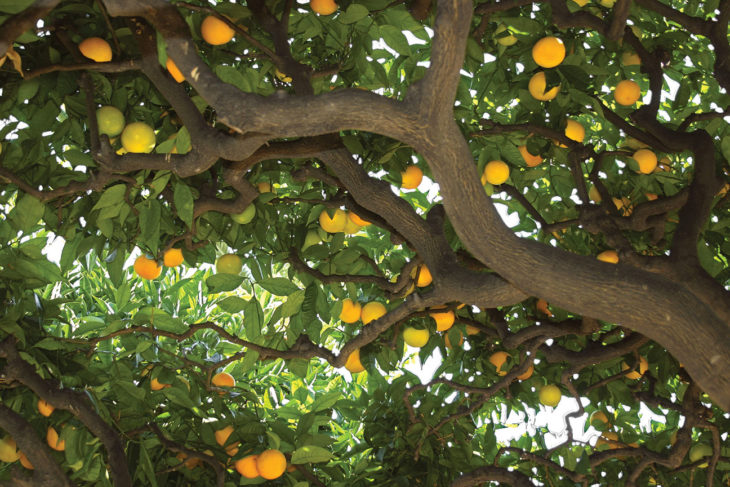by Stephanie A. Stasulis
In the book of Ecclesiastes, it says, “To everything there is a season, a time for every purpose under heaven.” Finally… the season of fall is arriving! Cooler temperatures signal that it is once again time to plant. Many people mistakenly think they need to wait until spring to plant trees, when in reality, fall through early spring is ideal.
Let’s be honest, for many, selecting trees for the landscape can be a daunting task. Evergreen or deciduous? Foliage or flowering? The multitude of considerations can often seem a bit overwhelming. To help alleviate some of the confusion and stress that may arise when making these decisions, I have compiled a list of simple factors to consider before heading out to purchase trees for your landscape this fall season.
The following are the questions I typically ask customers in the garden center when helping them to select trees. By considering these factors, a great deal of uncertainty will vanish once you see clearly what you want in a tree, or better yet, what you don’t want.
HARDINESS ZONE
First, remember to select a tree that does in fact thrive in your hardiness zone. Hardiness zone refers to the minimum and maximum temperature extremes in which a tree can be expected to grow.
EXPOSURE
Observe the planting site to determine how many hours of sun and shade and at what time of day the tree will be exposed? What about the soil and/or moisture situation? Will the tree be in a particularly wet or dry area? How is the existing soil: rich soil, clay or sand?
DECIDUOUS OR EVERGREEN?
Do you want a tree that will lose its leaves in the winter (deciduous), or do you prefer a tree that will provide green interest year-round (evergreen)? Keep in mind, a deciduous tree that is strategically planted near a building (home or business) provides cooling shade during the hot summer months, yet this same tree allows the sun’s rays to heat your home throughout the cold winter months.
FRUIT
Don’t forget to consider if the tree will bear fruit. If the tree is close to a home, business or sidewalk, fruit droppings can be especially messy. Be sure to allow adequate space for fruiting trees.
FORM
What shape are you looking for in a tree? If you have less space to work with, a tree with a columnar shape would be better suited. If you are seeking to provide shade, a tree with a broad canopy (round/oval shape) would be the best option.
AVAILABLE SPACE
Quite often this little (yet very important) detail tends to be overlooked. Be sure to look toward the future when selecting a tree and don’t just focus on how the tree looks right now. Make certain to consider the mature height, width and roots when selecting a tree. Keep your property lines in mind; the last thing you want is an angry neighbor.
GROWTH RATE
Do you have time to watch the tree mature? Perhaps you’re planting a tree for future generations to enjoy. On the other hand, if you are seeking to create a natural fence or screen to block visibility from a neighbor or from a busy street, you’ll want to consider trees with a fast growth rate.
In addition to making your home and property more visually appealing, trees have countless benefits that not only affect individuals, but communities and our world, too. Planting a single tree may seem insignificant, but in reality you may not even realize the impact your contribution will have on future generations. We all have a responsibility and we all must do our part. As Ralph Waldo Emerson said, “The creation of a thousand forests is in one acorn.”
Contact Stasulis at Beatline Nursery, Garden Center & Gifts or email stephanie1981@cableone.net.


